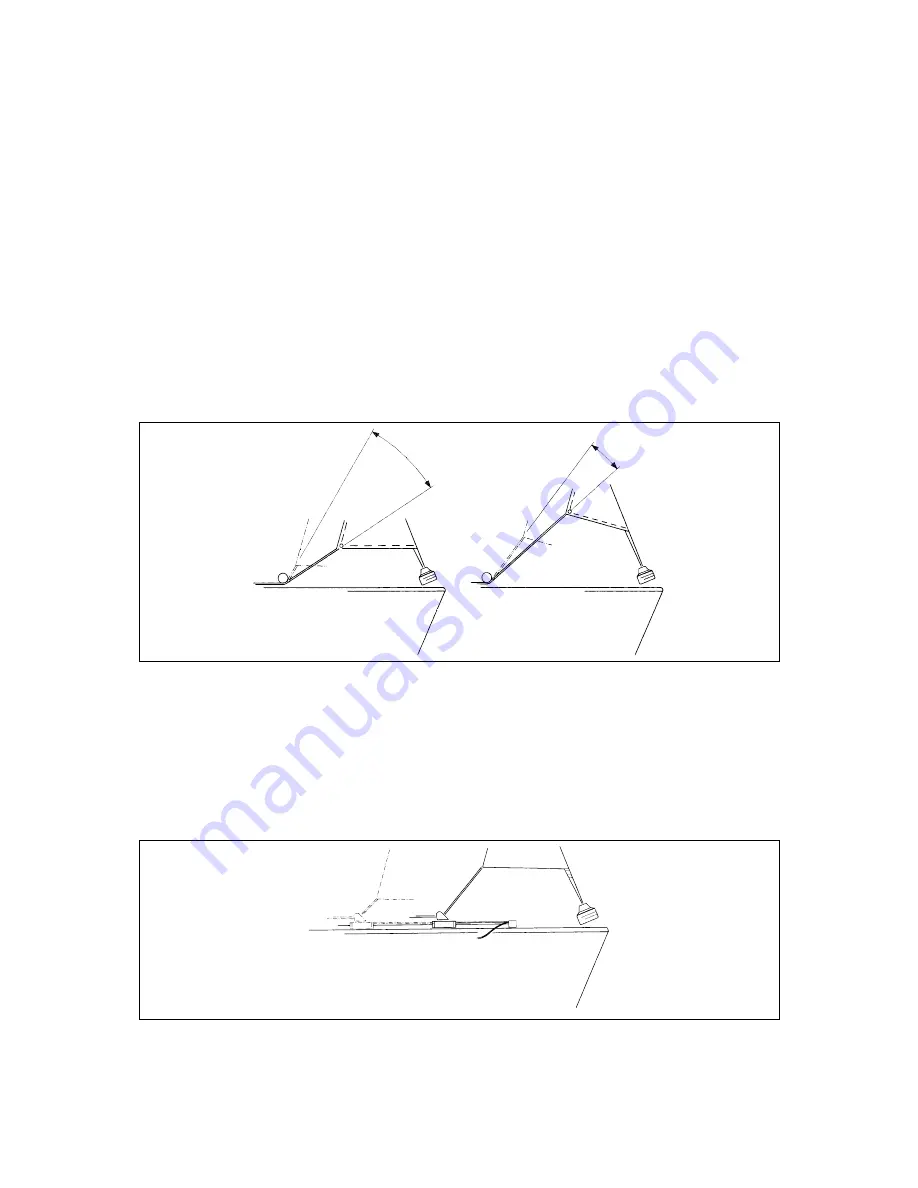
38
You will achieve the best sail shape by first unfurling the sail completely and then reefing down
to the appropriate size. Pull in the furling line and keep the sheet well tensioned. The sail will then
form a tight roll and its shape will be improved.
If the wind is too strong , or there are other reasons for not wanting to unfurl the sail completely, it
can be reefed from the furled position. The sail should then be furled relatively tightly.
The sail cannot be expected to have as good a shape when using this method. Wear on the sail is
also increased.
When the sail is reefed, it may be necessary to adjust the sheeting position. For a sail with a low clew,
the sheeting position has to be adjusted even when the sail is slightly reefed, a sail with a high clew
requires less adjustment. See fig. 12.4.a. As a rule, however,
you must be prepared to adjust the
sheeting position as necessary to give the best sail trim.
Fig. 12.4.a
Adjustment of the sheeting position is made considerably easier if a floating sheet point arrangement
is used. The traveller position is adjusted along the track by means of a line running through a block in
the front of the track. The line is best routed to the cockpit where it is secured. The traveller position
can also be adjusted under load with the aid of a winch.
Fig. 12.4.b
Many furling foresails have markings in the foot for different reefing positions. After you have tested
combinations of sail area and sheeting position to see which function satisfactorily, you can use these
markings as a reference and mark suitable sheet points on the track.
The angular variation of the sheet relative to the deck is less for a high-clewed sail. The comparison is
based on the same number of furling revolutions.
Low clew
High clew
12.3 Setting a reefed sail from the furled position
12.4 Adjusting the sheeting position





























